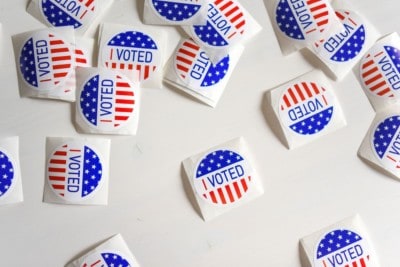
Is North Carolina historically a red state, as my Generation Z college students reflexively write? Or is it historically a blue state, as we of the Baby Boom Generation remember? The answer depends, of course, largely on your date of birth.
The key question of the moment is not so much what North Carolina was but what it has become as a major battleground in a historic presidential election. The North Carolina of 2020 bears the marks of its political history as part of the solid Democratic South through six decades of the 20th Century and its realignment in the wake of the 1965 Voting Rights Act, the 1968 election of President Richard Nixon and the subsequent Republican “Southern strategy.”
The Republican ticket has carried North Carolina in 11 of the 13 presidential elections from 1968 to 2016 – the exceptions being Democrats Jimmy Carter in 1976 and Barack Obama in 2008. No wonder students see the state over their lifetimes as Republican red.
And yet, over that same period, Democrats won nine of the 13 elections for governor — the exceptions being Republicans Jim Holshouser in 1972, Jim Martin in 1984 and ’88, and Pat McCrory in 2012. In seven Novembers, North Carolina voters elected a Democratic governor at the same time giving the state’s electoral votes to the Republican presidential candidate.
In its politics today, North Carolina is the product of competing coalitions, each resulting from powerful streams of cultural, economic, and ideological attitudes. One stream flows out of rural, small-town culture, now incorporating conservative Christianity as well as the limited-government and economic libertarianism of the Tea Party. The other stream draws from a strong tradition of public-private partnership in behalf of economic growth and educational advancement.
These broad coalitions competed inside the Democratic Party during the era of the one-party South. Now they result in Democratic-versus-Republican clashes in campaigns and in state policymaking. What has come to be regarded as the state’s political paradox — electing both arch-conservatives and moderate-progressives — has persisted through an era of dramatic economic transformation and population growth, especially in the major metropolitan regions.
North Carolina’s population of 10.5 million is twice as large as in 1968. Now more than four out of 10 residents were not Tar Heel bred, but moved in from elsewhere. And, as Rebecca Tippett of Carolina Demography has documented, the two major political parties present a notable contrast in their racial and ethnic profiles.
“Ninety-one percent of Republican voters are white compared to 65% of the electorate overall,” she writes. In the Democratic Party, “white voters are a minority” at 41%. Blacks (45%), Asians (7%), and Hispanics (4%) comprise a majority of registered Democrats. Nearly seven out of 10 unaffiliated voters are white.
The population surge and the economic transition that underlie the state’s political competitiveness result from a complex mix of public policy and private-sector decisions. Among the factors have been lower taxes and favorable cost of living compared to northern states – as well as public investment in schools, community colleges, and universities since the 1960s that contributed to making cities, towns, and suburbs attractive places to live and run a business.
That understanding is reinforced in an article published this week in The Atlantic, among the several national media efforts to comprehend North Carolina politics in 2020. Staff writer David A. Graham reported from Union County, drawing on Duke Professor Mac McCorkle’s analysis that a key to unlocking North Carolina politics is found in the “countrypolitan” counties between the urban-rural divide.
“Outside Monroe High School, an early-voting site,” Graham writes, “I struck up a conversation with Christina Helms, who was handing out a Republican sample ballot. Helms was campaigning for a friend who is running for school board, on which Helms is wrapping up a second and final term. Behind us stood a big, carefully maintained facility.
“‘Union County is a conservative county, with conservative values, Christian values,’ she told me. But she’s proud of the public-school system. ‘It is the feather in the cap of Union County, and we have every intention of keeping it that way. It’s important that we keep that momentum and that upward trajectory of all the things that we are doing for the schools and for these kids. That’s what it’s all about.'”
As the COVID-19 pandemic has made painfully obvious, North Carolina has wide gaps in connecting children to schooling. Research in the Leandro court case documents the state’s shortcomings in affording students their right to a sound basic education. Still, whether you consider North Carolina historically as a red state or blue state, you can see the state’s struggles and successes in expanding educational opportunity and quality as integral to its modern history — and vital to determining its future.



